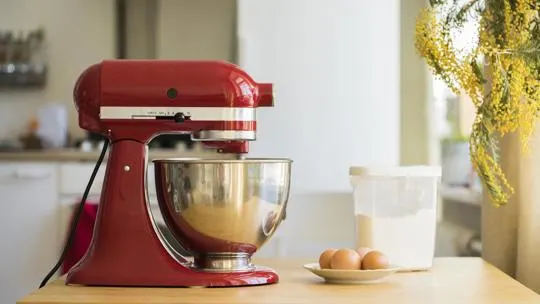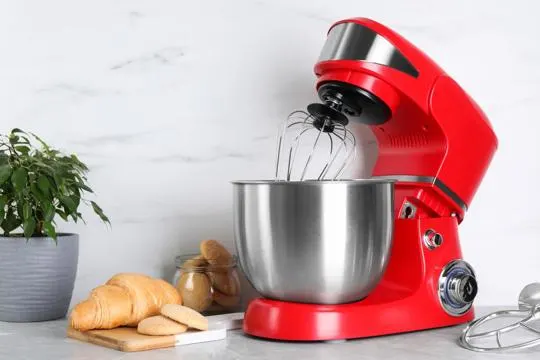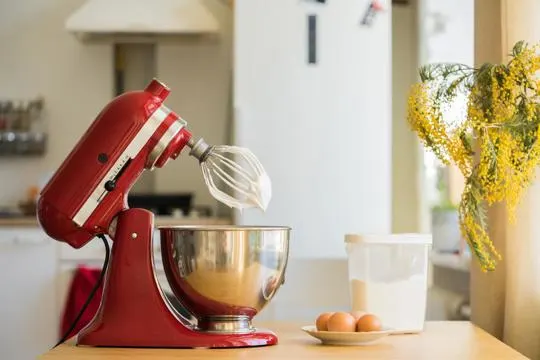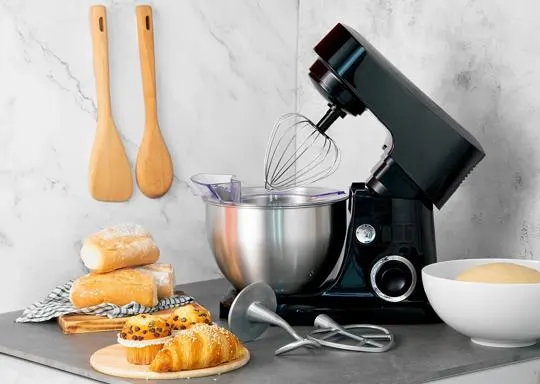Summary of key points
The key difference between bowl-lift and tilt-head mixers lies in the design and functionality. Bowl-lift mixers have a stationary head and use a lever to raise or lower the mixing bowl, while tilt-head mixers have an adjustable head that tilts back for easy access to the mixing bowl. This makes tilt-head mixers more convenient for adding ingredients while mixing. However, bowl-lift mixers are better for handling larger and heavier mixing tasks due to their sturdier design. Ultimately, it comes down to personal preference and the type of mixing projects you plan on tackling.
In the grand kitchen showdown, mixers take center stage. We’ve got bowl-lift and tilt-head mixers duking it out for the top spot.
Who’s going to win?
It’s not just about mixing dough. These gadgets are the heart of our kitchens, making everything from meringues to meatloaf easier.
We all remember our first baking disaster, right? I swear, half my batter ended up on the ceiling. That’s when I recognized the importance of choosing the right mixer.
Bowl-lift mixers stand tall, literally. You control the bowl, not the head.
Tilt-head mixers? The head lifts, offering easy access.
Each has its champions and, surely, its place in our kitchens.
Understanding Bowl-Lift Mixers

Bowl-lift mixers are different from tilt-head mixers.
Their design allows the bowl to be lifted up to attach, instead of tilting the head.
This gives more stability and support for heavy doughs or large batches.
These mixers are more powerful and have bigger bowls.
That is why they are perfect for kneading bread and making big batches of cookies.
They also come with various attachments. This makes it easy to do different tasks.
For example, mix batter or grind meat.
The design also allows for better access to the bowl, meaning more even mixing.
The size of your kitchen should be taken into account when deciding between a bowl-lift or a tilt-head mixer.
Bowl-lift mixers are larger and heavier. They may require more counter space and storage.
But their power and capacity might be worth it if you bake in large amounts or work with heavy doughs.
Understanding Tilt-Head Mixers

Tilt-Head Mixers make cooking easier.
Their unique design allows for easy access to the bowl by tilting the head back.
This means it’s easy to add ingredients or scrape down the sides while mixing.
These mixers are perfect for tasks such as whipping egg whites, mixing batter, or creaming butter and sugar.
The tilt-head design offers maneuverability and control during use.
You can easily adjust the speed and switch attachments without having to remove the bowl.
Plus, these mixers come in a range of sizes and power options.
Whether you’re a home cook or a professional chef, there’s a model that fits your needs.
Tilt-Head Mixers are also more compact and take up less counter space compared to bowl-lift models.
This is great for those with limited kitchen space or those who want a clutter-free workspace.
In conclusion, these mixers are versatile, easy to use, and convenient.
They are an essential tool for any cooking enthusiast or professional chef.
Consider adding a tilt-head mixer to your culinary arsenal.
Key Differences Between Bowl-Lift and Tilt-Head Mixers

Bowl-lift and tilt-head mixers can both mix ingredients, however, there are distinct differences.
Design and Mechanism
Mixers come in many shapes and sizes, with different mechanisms.
This is very important when choosing one, as it affects the performance and function.
Two major types are bowl-lift and tilt-head.
A bowl-lift mixer has a stationary bowl, with a lever to lift and lower the head.
This provides stability and power – great for heavy mixing such as dough kneading or whipping batter.
Tilt-head mixers have a hinged head that tilts back.
This makes it more user friendly, and easier to add ingredients or switch attachments.
The mechanisms of mixers also vary.
Planetary mixing action has multiple attachments rotating around the bowl, plus spinning on their own axis.
This ensures thorough mixing. Direct drive technology is another mechanism.
The motor directly powers the attachments, without extra gears or belts.
This helps efficient power transfer and reduces energy loss.
In conclusion, understanding design and mechanism will help pick the right mixer.
Bowl-lift offers stability and power, tilt-head is convenient and versatile.
Planetary mixing action and direct drive technology can further improve the performance and efficiency.
Bowl Capacity and Size
Bowl-lift and tilt-head mixers differ in terms of bowl capacity and size.
Bowl-lift models usually have bigger bowl capacity, great for kneading bread dough.
Tilt-head mixers have smaller capacity.
But they offer convenience when scraping the bowl or adding ingredients.
If you bake large quantities or make heavy doughs, a bowl-lift mixer is best.
But if you want ease of use and versatility, go with a tilt-head mixer.
Figure out your needs to decide which mixer is right for you.
Ease of Use and Space Efficiency
When deciding between a bowl-lift and a tilt-head mixer, ease of use and space efficiency should be kept in mind.
Bowl-lift mixers lift the bowl towards the beaters, allowing easy access to ingredients and accessories.
On the other hand, tilt-head mixers feature a hinge that enables the head to tilt back, making it simpler to scrape down the sides of the bowl.
Space-wise, bowl-lift mixers are taller but have a smaller footprint, while tilt-head mixers have a larger footprint but take up less vertical space.
Additionally, bowl-lift mixers generally have more power and are better suited for larger quantities of dough or batter, making them great for commercial kitchens or for bakers.
In the end, it’s all about personal preferences and needs.
Both mixers have distinct advantages that can improve the cooking experience.
Attachments Compatibility
Attachments compatibility is a must. Bowl-lift and tilt-head mixers have their own set of compatible attachments.
Bowl-lift mixers have more options. So, if you need a specific attachment, consider the compatibility of the mixer type.
Bowl-lift mixers have an advantage. They can handle heavier attachments and larger capacities.
Perfect for kneading dough or mixing large batches.
Whereas, tilt-head mixers are better for lighter attachments and tasks that don’t need much power or capacity.
Similarities Between Bowl-Lift and Tilt-Head Mixers

Bowl-lift and tilt-head mixers both make indispensable kitchen tools.
They are great for a variety of cooking and baking tasks.
Both have powerful motors and come with useful attachments.
These mixers can whip, blend, and knead ingredients.
You can switch between different mixing methods with ease.
Dough hooks, wire whips, and flat beaters are all included.
No matter what recipe you’re preparing, these mixers have you covered.
Their sturdiness is another similarity.These mixers are made to last.
They won’t wobble or move during use.
You can rely on them for consistent results every time.
Speed options are available too.
Whether you need slow or fast speeds, you can control the blending process.
Plus, large capacity bowls let you prepare generous amounts of ingredients.
Small or big batches are no problem.
In conclusion, bowl-lift and tilt-head mixers share many similarities.
Home cooks and professional chefs alike can benefit from their versatility, sturdiness, speed options, and large capacity bowls.
Factors to Consider When Choosing Between Bowl-Lift and Tilt-Head Mixers
When it comes to bowl-lift and tilt-head mixers, there are several factors to think of.
Capacity is one.
Bowl-lift has bigger bowls, so it can manage larger amounts of ingredients.
Perfect for heavy baking/cooking.
Tilt-head has smaller bowls, so it’s ideal for everyday use in smaller kitchens.
Ease of use is another.
Tilt-head mixers let you easily access the bowl, since the head tilts back.
Bowl-lift mixers require lifting/lowering the bowl with a lever/handle, which may be tricky.
Durability counts too.
Bowl-lift mixers tend to be sturdier, with a reinforced neck that holds the weight of the bowl.
Tilt-head might not last as long, due to its design.
Attachments/accessories are important too.
Both offer a variety of attachments, like whisks, dough hooks, and paddle attachments.
Some models may have specific attachments only compatible with either bowl-lift or tilt-head mixers.
Ultimately, it’s personal preference and needs.
Consider capacity, ease of use, durability, and available attachments when making your choice.
Whether an avid baker or just cooking at home, choosing the right mixer can improve your culinary experience.
Kitchen Space
When optimizing kitchen space, every inch matters.
Utilizing the area properly allows for better organization and easier cooking.
To get the best kitchen setup, consider how appliances can maximize space.
A KitchenAid stand mixer is a popular choice.
Picking the right type, however, affects kitchen spatial dynamics.
Common ones are bowl-lift and tilt-head mixers.
Each has its own advantages when it comes to space.
Bowl-lift mixers have a stationary bowl that lifts up to the head.
This provides stability, but also needs more vertical clearance.
It won’t work if you have limited cupboard space or low-hanging cabinets.
Tilt-head mixers have a hinged head that tilts back.
This makes it easy to add ingredients or scrape down the sides, but needs less vertical clearance.
These are great for kitchens with limited overhead space as they can fit under upper cabinets.
When choosing between these two types of stand mixers, consider your kitchen’s layout and available space.
There’s no one-size-fits-all solution. It depends on your needs and constraints.
Mixing Volume
Mixing volume is the capacity of a mixer to handle ingredients.
It determines how much batter or dough you can make.
Bigger mixing volumes let you make larger batches quickly.
But, the mixing volume varies between brands and types of mixers.
Bowl-lift mixers usually have bigger mixing volumes than tilt-head mixers.
That means they can handle more ingredients, making them ideal for businesses or when making large amounts of food.
Tilt-head mixers, however, have smaller mixing volumes but they’re simpler to use.
Their tilting head design allows easy access to the bowl and attachments.
You can add ingredients or scrape down the sides during mixing.
Both types of mixers have pros and cons.
Bowl-lift mixers are great for handling large amounts.
Tilt-head mixers work well for everyday home use.
Pick based on your needs and tastes.
Attachments and Accessories
Mixers come with various attachments and accessories.
These add-ons can make your mixer more useful and versatile.
A dough hook is great for kneading bread dough.
It mixes and kneads quickly, saving you effort.
A wire whip, or balloon whisk, is perfect for whipping cream and egg whites to get fluffy textures.
Paddle attachments are good for mixing batters and cookie dough without over-beating.
You can also get additional bowls of different sizes for preparing multiple recipes without washing the bowl.
Splash guards stop ingredients from splattering when mixing at high speeds.
This helps keep your workspace clean.
Specialized attachments like pasta rollers and food grinders let you make homemade pasta and grind food to the desired consistency.
These attachments and accessories give flexibility and convenience when using a mixer.
You can use them to bake breads, make desserts, and experiment with recipes.
Popular Brands and Models of Bowl-Lift and Tilt-Head Mixers
Baking aficionados and experts alike seek out popular brands and models of bowl-lift and tilt-head mixers.
These mixers deliver effective solutions to kitchen jobs.
KitchenAid, Cuisinart, and Hamilton Beach are the top producers of these mixers.
KitchenAid is renowned for its quality mixers.
The Professional 600 Series bowl-lift model is a favorite, providing tremendous performance and substantial capacity.
It quickly kneads dough and effortlessly mixes thick batters.
Meanwhile, the Artisan Series tilt-head mixer unites elegance and versatility, perfect for many cooking projects.
Cuisinart also has dependable options.
The SM-50 bowl-lift model is remarkable due to its durable design and precise mixing.
With several speed settings, it gives complete control over mixing consistency.
The SM-70 tilt-head mixer offers a powerful motor and several attachments for different culinary tasks.
Hamilton Beach has gained recognition for its affordable mixers.
The Eclectrics All-Metal Stand Mixer is a popular bowl-lift option that provides great performance at a low cost.
Its strong motor manages various ingredients and ensures thorough mixing.
For those who prefer tilt-head mixers, the Classic Hand/Stand Mixer provides convenience with its dual-functionality feature.
Conclusion
In summary, there’s a lot to consider when trying to decide which stand mixer is best for you and your kitchen needs.
Bowl-lift vs tilt-head mixers both have pros and cons depending on whether you are baking specifically or just need a little extra help with food prep.
Although bowl-lift mixers generally come in larger sizes than the tilt-head option, either one should be able to offer enough power and durability for your kitchen needs.
It really comes down to how much money you’re willing to spend, what type of recipes you’ll use it for, and deciding the maximum size allowed in your kitchen.
By keeping these things in mind during your stand mixer search, it can help guide you toward making the right choice that’s best suited for you before investing the money into one of them.

Leave a comment